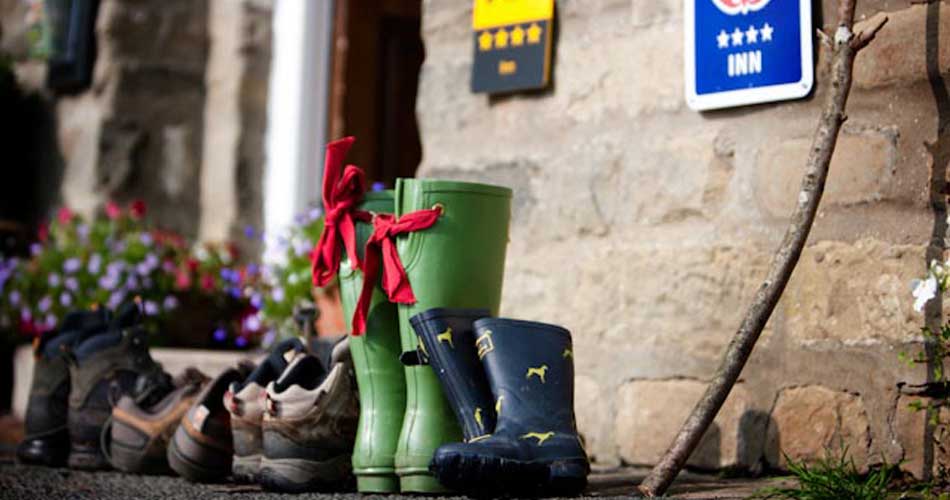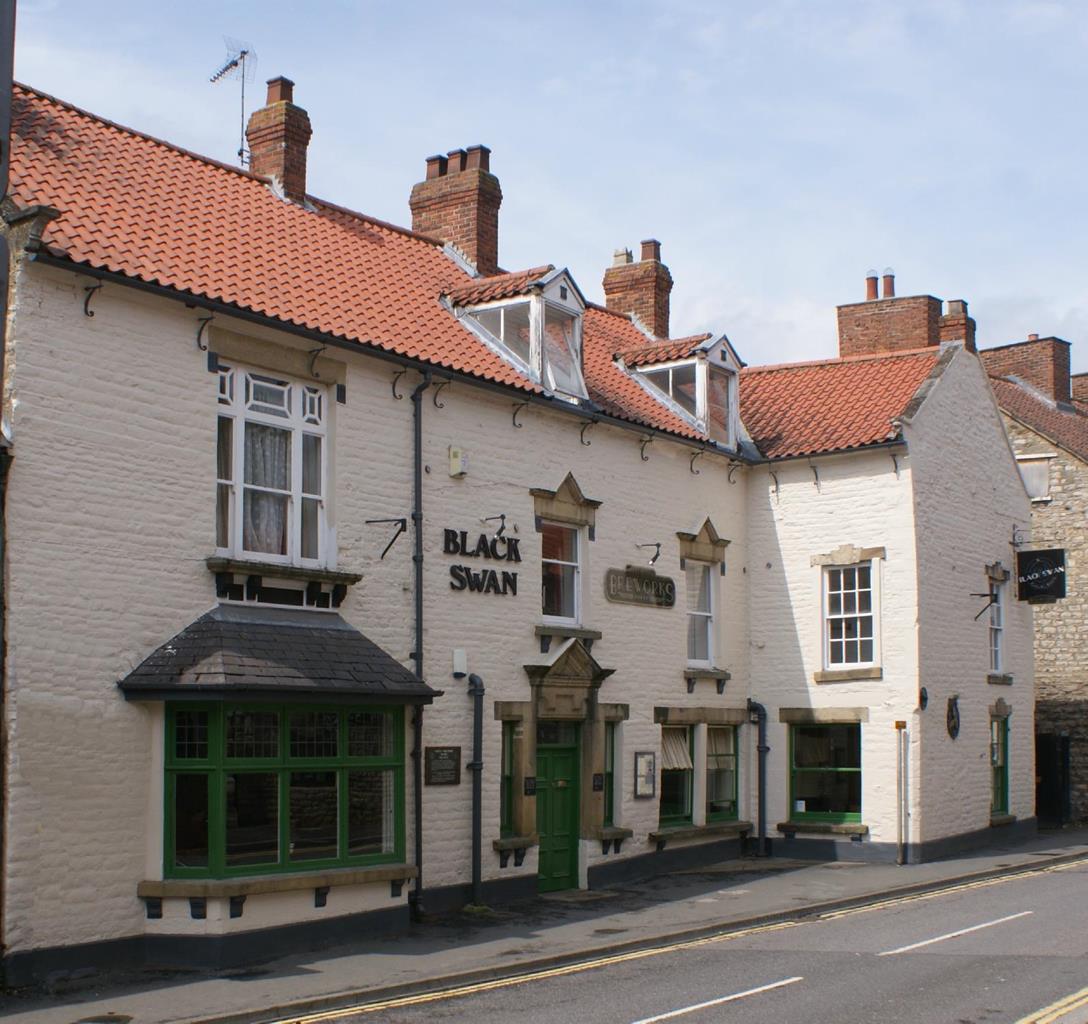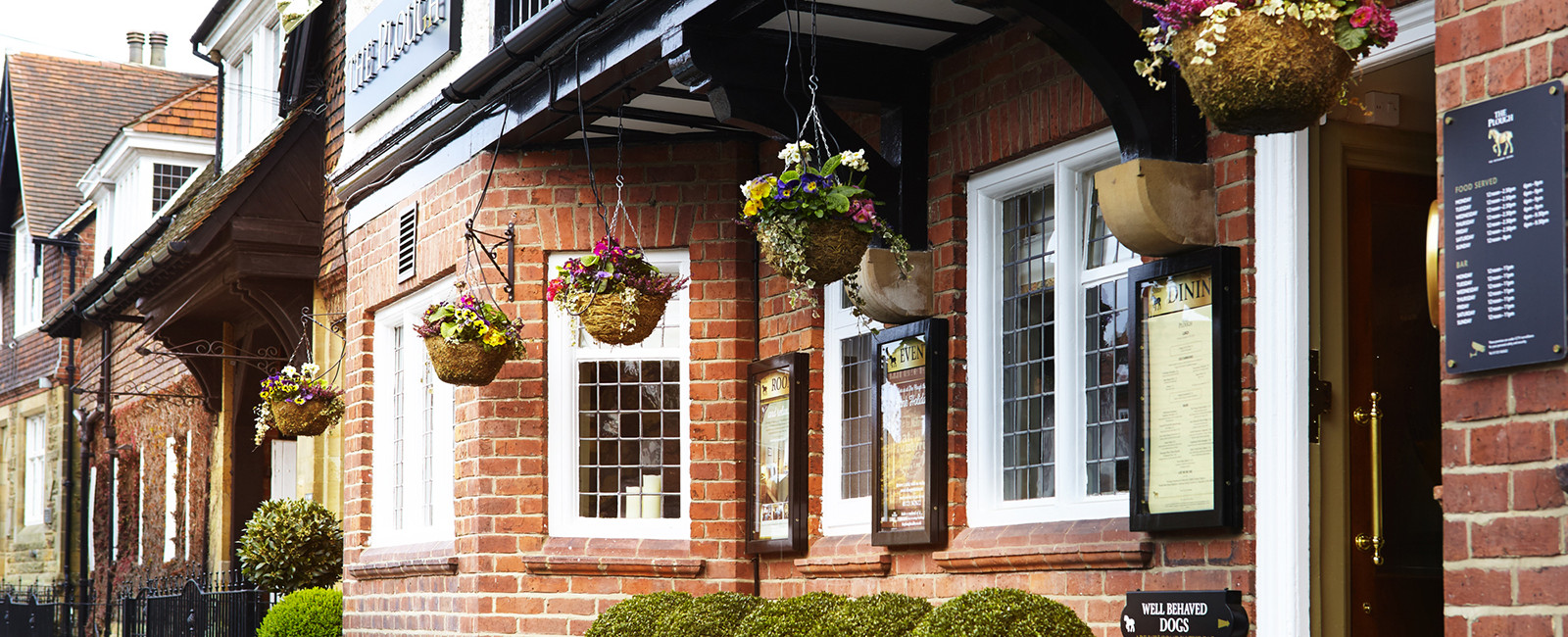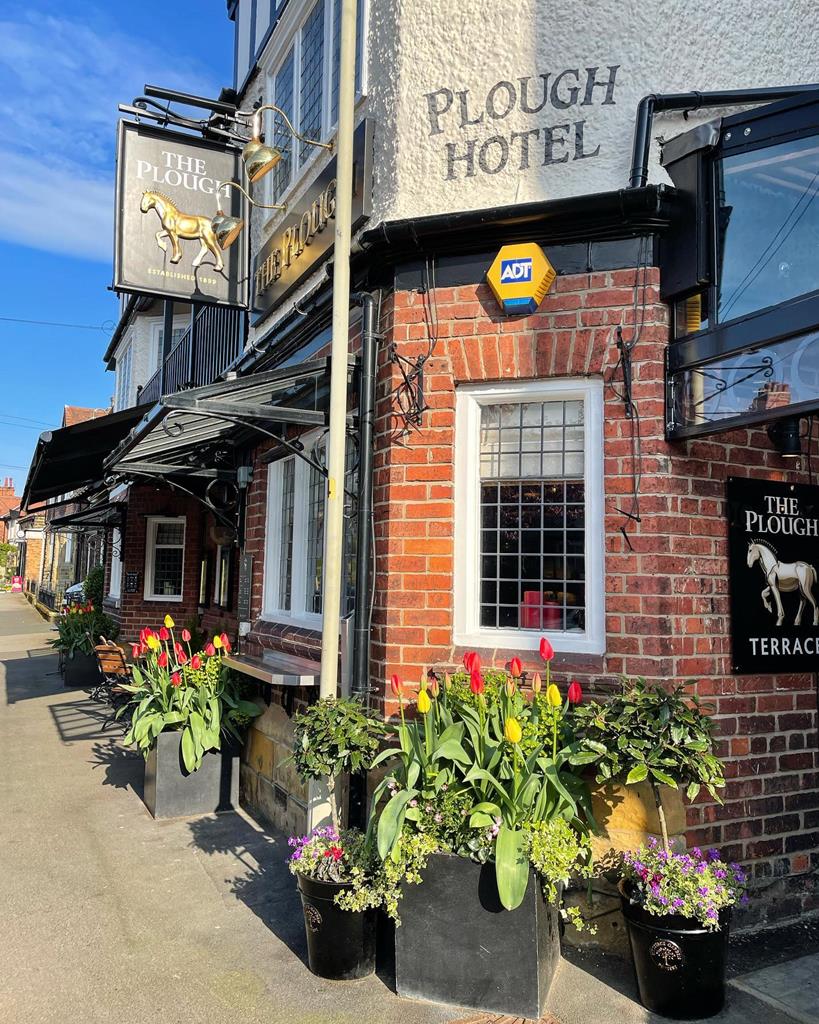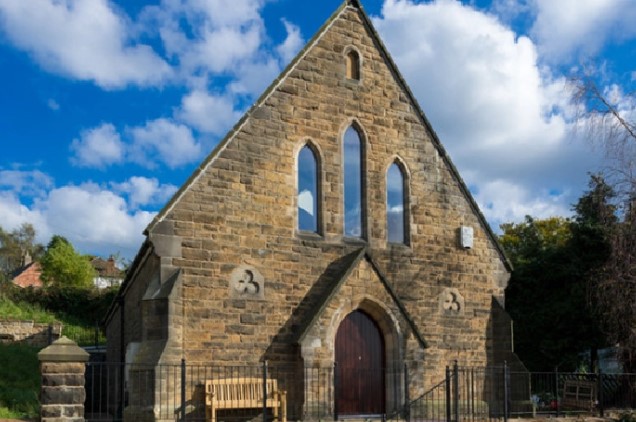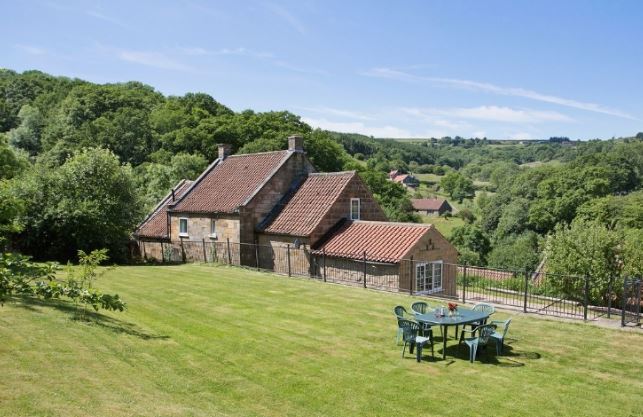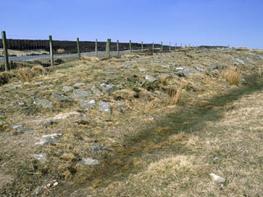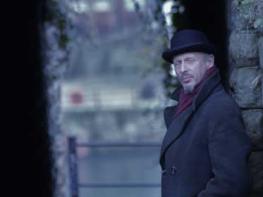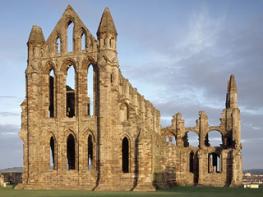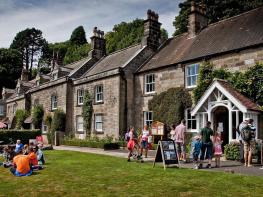Oakfield Avenue is a modern bungalow on the edge of the popular village of Goathland and a short…
Mallyan Spout and Goathland

Walking from the popular moorland village of Goathland through woods and along an ancient road.
6.5 miles (10.4kms)
About the walk
Goathland is one of the most popular destinations for visitors to the North York Moors National Park. Its situation, around a large open common, crisscrossed by tracks and kept closely cropped by grazing sheep, has always been attractive. Today, however, many tourists are drawn to Goathland because it was used for the fictitious village of Aidensfield, setting for the popular television series Heartbeat. Many of the shops and businesses are now geared to visitors who want to see Aidensfield. On filming days great crowds would gather to watch the actors rehearse and go through several ‘takes’ as the drama unfolded.
The walk begins with a visit to the 70ft (21m) Mallyan Spout waterfall which pours into the West Beck. At this point the valley carved by the beck has a lip of much harder stone, and the little stream coming from the heather moorland above has been unable to carve its way through. In dry weather only a trickle of water may fall from the side of the gorge into the stream below – which accounts for its name of ‘Spout’ rather than ‘Force’ – but after rain it can become an impressive torrent. Take care at all times – and be aware that sometimes it may be impossible to pass the waterfall on the rocky streamside path. According to legend Wade’s Causeway was built by Giant Wade to take his cattle to market, while his wife Bell worked on Mulgrave Castle near Whitby. They had just one hammer, and they threw it the 18 miles (29km) between them as they needed it. They were a notoriously argumentative couple – the deep valley of the Hole of Horcum on the road between Whitby and Pickering is said to have been created by Wade scooping out a large handful of earth to throw at Bell. He missed, and the earth landed to form nearby Blakely Topping. In fact, there is some dispute about the real origins of this 0.75-mile (1.2km) stretch of ancient causeway. Long accepted as Roman, it may be much later – or even earlier, though a Roman construction seems the most likely explanation. Whatever the reality, you can still make out the ditches at each side of the road, the culverts still covered by stone capping in places. The road took legionaries from Malton to the signal station near Whitby, but its route has not been authenticated all the way.
Walk directions
Opposite the church go through the kissing gate beside the Mallyan Spout Hotel, signed ‘Mallyan Spout’. Follow the path to a streamside signpost and turn left. Continue past the waterfall (take care after heavy rain). Follow the sometimes-difficult, rocky and boggy footpath over two footbridges, a stile and up steps, then for another mile (1.6km), always beside the stream, to a stile onto a road beside a bridge.
Turn left along the road and climb the hill. Where the road bends left, go right through a gate and along a bridleway. Turn left down steps to go over a bridge, then ahead beside the buildings, through a gate and across the field.
Part-way across the field, go through a waymarked gate to the right into woodland. Ascend a stony track and go through a gate, eventually turning right up the field, alongside the wall, after you leave the wood. Go left at the field top, through a gateway. Continue with a wall on your right and go through a waymarked gateway in the wall and half right up the next field, to emerge through a gate onto a metalled lane.
Turn left along the lane, go through a gate and follow the Roman Road sign. Go through two more gates by the farm, still following the public bridleway signs as you join a green lane. Continue through two handgates to descend to another gate and over a stile, to reach a ford.
Do not cross the ford but turn immediately right, signed ‘Roman Road’, to go over a footbridge. Go right at the end of the bridge and follow the path. Go over a stile and bear left, following the waymarker direction. Ascend to a wooden stile in the corner of the field and continue along the track with a wall on your left. Go through a gate; there is a signboard to the left with details of the Roman Road.
Walk along the Roman Road (to the left of the modern track) and go over a ladder stile beside a gate, following the line of the road. About 0.25 miles (400m) beyond the gate, look for a faint path to the left near a drainage channel, down into the valley. The path eventually passes left of an anvil shaped rock and descends steeply to stepping stones across the stream.
Cross the stream, go over a stile on the other side and continue along the grassy path. Do not go along the boardwalk but continue on the path that passes the building and comes out onto a track. At the signpost continue straight ahead past Hunt House farm onto a metalled lane.
Where a track goes off half left, turn right up a grassy track. Bend right towards a small cairn on the ridge, then bend left, keeping below and parallel to the rocky ridge. Take a left fork by another cairn, to go slightly downhill to join a clear track. Goathland soon comes into sight. Pass a bridleway sign and descend to the road near the church, to return to the start.
Additional information
Rocky streamside tracks, field and moorland paths, 5 stiles
Deep, wooded valley, farmland and open moorland
Dogs should be on lead
OS Explorer OL27 North York Moors, Eastern Area
Goathland village, has a large car park, or on the roadside
Goathland village
WALKING IN SAFETY
Read our tips to look after yourself and the environment when following this walk.
Find out more
Also in the area
About the area
Discover North Yorkshire
North Yorkshire, with its two National Parks and two designated Areas of Outstanding Natural Beauty, is England’s largest county and one of the most rural. This is prime walking country, from the heather-clad heights of the North York Moors to the limestone country that is so typical of the Yorkshire Dales – a place of contrasts and discoveries, of history and legend.
The coastline offers its own treasures, from the fishing villages of Staithes and Robin Hood Bay to Scarborough, one time Regency spa and Victorian bathing resort. In the 1890s, the quaint but bustling town of Whitby provided inspiration for Bram Stoker, who set much of his novel, Dracula, in the town. Wizarding enthusiasts head to the village of Goathland, which is the setting for the Hogwarts Express stop at Hogsmeade station in the Harry Potter films.
York is a city of immense historical significance. It was capital of the British province under the Romans in AD 71, a Viking settlement in the 10th century, and in the Middle Ages its prosperity depended on the wool trade. Its city walls date from the 14th century and are among the finest in Europe. However, the gothic Minster, built between 1220 and 1470, is York’s crowning glory.
Nearby stays
Restaurants and Pubs
Nearby experiences
Recommended things to do
Why choose Rated Trips?
Your trusted guide to rated places across the UK
The best coverage
Discover more than 15,000 professionally rated places to stay, eat and visit from across the UK and Ireland.
Quality assured
Choose a place to stay safe in the knowledge that it has been expertly assessed by trained assessors.
Plan your next trip
Search by location or the type of place you're visiting to find your next ideal holiday experience.
Travel inspiration
Read our articles, city guides and recommended things to do for inspiration. We're here to help you explore the UK.





